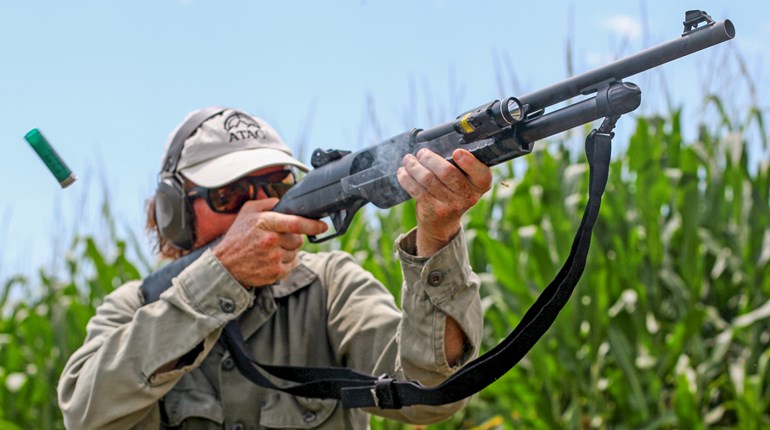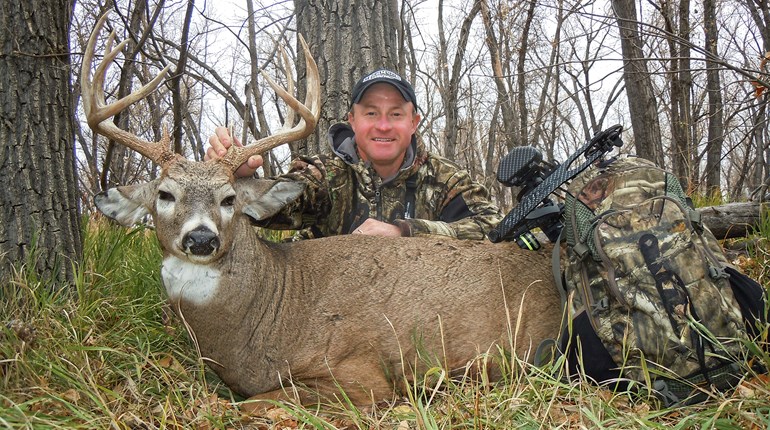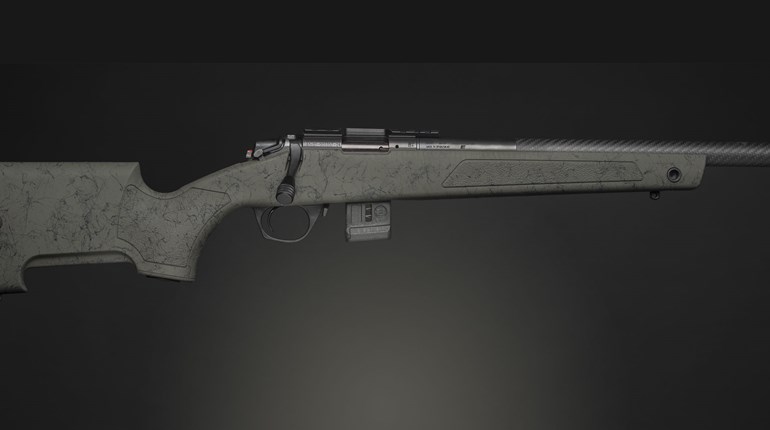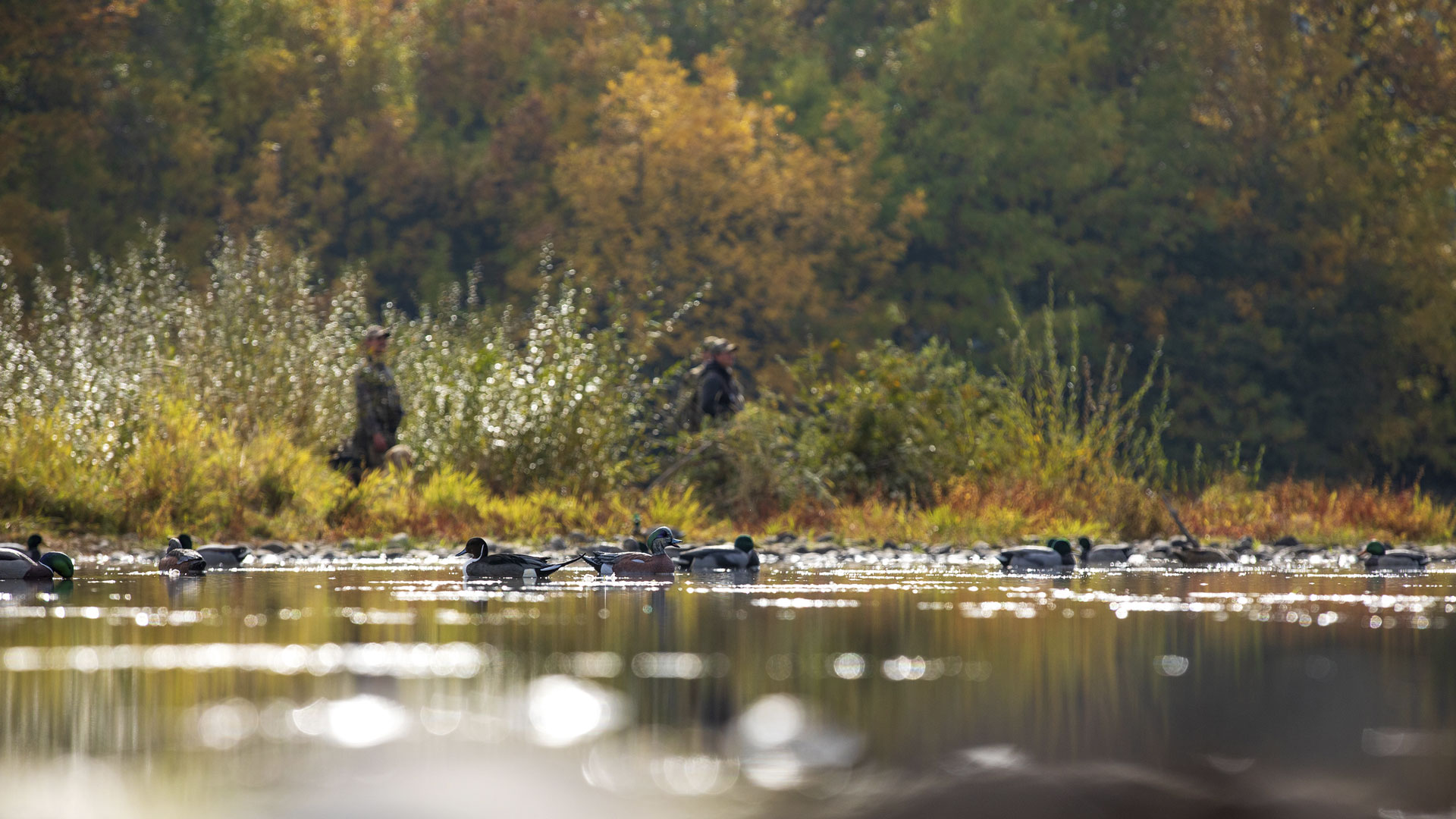
I was lucky to start my writing career just as the whitetail boom took off. Since then, I have had some great hunts and shot some good bucks, but the ones that got away are what I see in my dreams; oddly enough, it’s not deer I shot at and missed but bucks that never really gave me a chance. Here are a handful that come to visit me late at night to mock me endlessly.
‘I never saw him again’
Some decades back the whitetail boom was in full force and western Canada was getting a lot of attention for its giant bucks. The rest of the country was trying to cash in and as I was writing for one of the biggest whitetail magazines at the time, the government of Nova Scotia invited me for a deer hunt.
I had a wonderful time. The lodge was focused on Atlantic salmon fishing and with the high rollers who chase those fish—well, the folks at the lodge knew how to treat a customer.
My guide was a Micmac Indian who lived on the reservation, and he was my best friend by noon the first day. Tom knew deer hunting and worked hard, but there just were not that many deer. We also got beat up by the weather as high winds and biblical rains were followed by a wicked snowstorm. We were beat before we even started.
Late morning of the last day I was sitting in a treestand deep in a huge hardwood expanse. I turned my head to look at a patch of snow I had seen a few thousand times already, and a huge buck walked through the opening and was gone. I never saw him again, but even in that brief look I knew this buck would have put Nova Scotia on the whitetail map and me on the magazine’s cover.
‘I was so sure … ’
The Vermont deer season was growing old and decaying fast. The deer knew they were being hunted and were spooky and very nocturnal.
As the sun rose at my back, I was sitting on top of a mountain, watching down the steep western slope on my left. To my right was a hardwood flat, interspersed with boulders and ledges. I looked there and saw a couple of does running about 100 yards off in the hardwoods. Chasing them was one of the best bucks I have seen in 50-plus years of hunting Vermont.
I slowly turned and stood, resting my rifle against a tree. I was so sure I had this buck, I was already thinking about how to get him back to my truck. I had a custom .35 Whelen bolt action that was made for this kind of hunting and there was no way he could escape. His best option was to just walk over to me and surrender.
He passed through one small opening and I had him in the crosshairs, but hesitated a fraction of a second and the opportunity disappeared. I saw the does go through the next opening in the trees and moved the crosshairs to that spot.
The buck never showed.
I was sure he couldn’t leave without me seeing him, but he just evaporated.
Maybe he sprouted wings? I just don’t know.
What I do know is that he was damn big.
Huge as a Hereford Bull
This was in the late ’80s when Alberta was Mecca for big deer. Everybody had seen the video “The Monarchs of Alberta”; the province was the hip and happening place for serious whitetail hunters.
Yet here I was with the sun setting on my last day and nothing to show for my efforts. I had hunted hard, but never saw a deer even approaching the legendary status promised by Alberta.

I was watching a long meadow between two big patches of woods when a buck stepped into the far end of the clearing. He was huge and looked like a Hereford bull with his square build and bulging shoulders. The antlers on top were so big they looked out of place. It was too far to shoot and dark was just minutes away. I knew I could not get this buck, but I tried. He was gone long before I could move close enough to shoot. It was black dark when I reached that end of the field. I checked his tracks with a flashlight and knew I was not imagining him.
I returned to Alberta the next year and shot a buck that was my best for many years. Still, he paled in comparison to the buck in the meadow.
That last-minute buck has always haunted my dreams.
I Never Should Have Listened to Them
We were hunting near Eldorado, Texas, in the late ’90s with Steve Elmore at his Live Oak Hunting Lodge. I was in a metal box blind with my daughter, Erin, who was about 12 at the time. We watched a remarkable parade of bucks walk by, each one bigger than the last. My little voice kept saying, “Don’t shoot yet.” So we held off.
Then he stepped out. My God, he was magnificent. I should have just told her to shoot him, but I had to play the fool. The whitetail magazine I wrote for at the time had a couple of guys in camp and they had asked me to take a camera and film to the stand. For some reason I can’t remember, I decided Erin and I needed to swap places. Of course the camera bumped the metal blind and the deer tore out of there. When he did, the others left, too.
One by one they all came back, except him. We waited as long as we could before Erin shot the next-biggest. It was a great deer and it hangs on a wall in my house today. But the memory of what should have been haunts me still.

Coyote Dinner?
Our family deer camp backs up to national forest land and some of the most remote country to be found in Vermont. As a young man in the ’70s I loved to ramble deep into the big woods. I had been hunting this buck for several seasons and knew his track well. I believe he was 5½ years old at this point and carried antlers that would pass for big anyplace deer are hunted.
This was back in the days when I used a fixed-power Weaver K-4 scope that was guaranteed to fog up every deer season. It didn’t fog this day, but snow was coming down so hard even that low magnification was too much.
I had left his track far too late in the day and was climbing a hardwood ridge in a direction I hoped would take me to camp. The snow and sleet that was falling was blown by the wind so hard I could not open my eyes more than a slit. Dark was less than an hour away and I didn’t have a clue where I was.
Squinting through my ice-coated lashes I pounded up the hill, legs pumping, arms swinging, my gun on my shoulder. As I topped the ridge I could see two bucks quartering to me and running for cover. The smaller buck had a rack that would have looked good on any wall, but it seemed tiny compared to the big guy. I raised my gun and through the scope the blinding snow formed a white wall, I dropped the gun and they were still out there. I raised it again and once more was blind, I dropped it and they were gone.
I saw that buck again the next year, on the last day of the season. He got away again, too, same as the year before.
The following year he would be 7½, almost unheard of amid our harsh winters. I hunted for a week without any sign of him. I don’t think a hunter ever shot him—I would have heard. I suppose one cold February night the coyotes caught him hungry and weak, and completed the cycle.
That Ain’t Legal
I knew Manitoba would be cold, but nothing like this. A storm blew in the day I arrived, dumping snow, and it was followed by brutal cold. We lost the first hunting day to the storm and had been fighting the elements every day since.
I don’t think it had risen above minus 25 all week. The snow was deep enough to fill the pockets on my pants when we tried to walk through it, and it was exhausting to walk more than a few yards at a time. Even getting to the stands was a lot of work and at times we had to shovel a path.
I tried every trick I knew and a few I had just read about. I remember using a burner under a pan of doe-in-heat urine to keep it from freezing and, according to something I read, “spread that earthy scent for miles.” It didn’t work; it was so cold the propane burner froze and would not stay lit. The urine would freeze almost instantly when the flame went out about nine seconds after I climbed back into the treestand. I made multiple attempts, but it never worked. You would think that all that climbing up and down would have kept me warm, but it did not.
I tried rattling, but it was so cold the antlers would chip every time I whacked them together. My hands were numb, and when an antler beam hit my thumb and something flew off, I seriously thought for a moment that my thumb had broken loose from its moorings.
A heated blind would have been great, but it was not a concept the outfitter embraced. Instead I sat in open treestands hour after hour, enduring the cold and hoping I would die soon. We tried tracking but the snow was too deep, even if we could have found a track. The storm had shut down all deer movement. They were huddled someplace trying to keep warm and refusing to burn the calories it would take to move in this snow.

My guide had worked his heart out—nobody could have tried harder. We just couldn’t beat the weather. I climbed out of the treestand as dusk approached on the final afternoon, defeated, worn out and depressed. A full moon lit up the cold Canadian landscape with an eerie blue light as I walked out the path. The guide was waiting at the truck and we didn’t talk as he turned around and started driving one of the endless, narrow roads.
I glanced to the left and there, in a small field, stood a huge buck. Big bodied with monstrous antlers. He was every inch of the Canadian whitetail buck I had been seeking.
We stopped and glassed him for some time. I suppose I could have shot him and nobody would have ever known that it was past legal shooting time. Except me, and I could not live with that shame.
So, instead, I live with that buck haunting my dreams.
Full-Blown Panic
Hunting deer in Maine is always a tough undertaking. If there is snow—the right kind of snow—you can track. Tracking is effective, but the days when you can hunt that way are usually scarce. Deer hunting on bare ground in Maine can try a man’s soul. You might get lucky, but most hunters do not. Many hunters never even see a deer.
There was snow on the ground when we arrived at our camp near Rangeley, Maine, but a warm front was due. I had never hunted this area before and decided to use the first day scouting. With the snow melting fast, I wanted to try to locate the tracks of a big buck or two. That would at the very least give me a place to start. The best way to cover ground and find tracks is always to drive the backroads and trails.
I had a newly leased truck and we were pretty rough on it that day. Some of its parts ended up riding in the bed after I tore them off the truck. Somewhere there is a photo of me driving through a deep puddle, pushing 2-inch-thick chunks of ice as it piled up high enough to slide onto my hood. The truck suffered, but we found some deer. I would worry about the cost later.
By mid-afternoon the snow was history. We were driving down an old logging road that had passed its prime in the 1800s. Snowmobiles now used it in the winter, but nobody sane would have driven a truck on it, much less a brand new truck.
My son, Nathan, was maybe 13 or 14, but he was an experienced deer hunter with several good bucks to his credit. He spoke from the back seat: “Dad, there’s a deer! It’s a big buck. No, it’s a huge buck.”
My friend Matt Thomas was riding shotgun and he and I started looking at the steep ridge beside us.
“He’s in the brook,” Nathan said.
He was. The buck was lying in a deep pool in the brook about 30 yards from us, with just his neck and head showing over the rocks. Nathan was right: He was huge.
I stopped the truck and told Nathan to get out, load his gun and shoot the deer. It was quite legal at the time, and while not my preferred way to take a buck you have to take them as they are presented.
Meanwhile I stepped out on my side, and loaded my rifle. I had the crosshairs on the deer’s neck, but I wanted Nathan to shoot him. I looked at him to see what was taking so long and witnessed full-blown buck fever.
Even back then Nathan was a gun guy who liked to experiment with different guns, and he was hunting with a rifle I was sent to test. This was during the frenzied short magnum craze and the rifle was chambered for the latest wiz-bang cartridge. It also had a very long barrel. Nathan had already taken a nice buck with it in Vermont’s youth season, and insisted on using the rifle in Maine.
He had somehow managed to get the barrel stuck in the roof liner and the butt jammed up on the gear that all but filled his space in the back seat. Rather than stop to untangle it, he pushed his boots against the front seat and yanked repeatedly on the rifle in a full-blown panic. He was a strong kid, and each yank wedged the rifle a little tighter. I swear the barrel was raising a welt in the metal roof. Nathan was so focused he didn’t hear a word I said.
“Matt,” I said, “Maybe you had better shoot that buck.” A bit panicked himself, Matt dropped his magazine as he exited the truck.
The buck had enough of this foolishness. He stood up, with water cascading off him like a breaching whale. He was huge-bodied, and he was wearing big antlers—“a horse with antlers,” Nathan later called him. I have no doubt he was one of the biggest whitetails in the state of Maine, a place famous for big bucks. It took that deer two jumps to get over the steep bank and get gone.
I knew he would be back late some night to visit.
■ ■ ■
There’s one more ... I was hunting in South Carolina at Kenny Jarrett’s Cowden Plantation. Kenny invented the Beanfield rifle, which launched the long-range deer hunting revolution. He tested and perfected the design here on this plantation.
I was using Kenny’s personal rifle, the one he had hunted all over the world with, and I had shot it out to 1,000 yards the day I arrived.
I was high in a box blind when the dawn started the new day. On my right were endless agricultural fields; to the left was a thick, impenetrable swamp. In front was a long, narrow greenfield, perhaps 30 or 40 yards wide. A thick hedgerow separated the greenfield from the open crop field, so that the greenfield had thick brush on three sides and my blind on the fourth.
I was working the shadows of this opening with my binocular when I spotted a huge buck just on the edge at the far end. I had already ranged it at 440 yards—a tough shot, but one this rifle and .300 Jarrett cartridge was born for. The buck was facing at me, which is a low-percentage shot. I had all the time in the world, so I stayed on him with the crosshairs as he walked toward me, on a slight diagonal.
I had little doubt he would present a broadside shot soon. Several times I was tempted to simply take this head-on shot, but then I told myself to just wait, be patient. I had seen bad results from that shot angle in the past, and the deer was a long way off.
I was so focused on the buck that I didn’t notice he was working his way to the other side of the small opening as he walked. He had closed the distance to about 350 yards without ever giving more than a frontal shot. But, every second was bringing him closer and boosting the odds that he would stop and turn. I had him; he just needed to give me that one chance. Then almost before I noticed where he was, the buck melted into the brush along the hedgerow and disappeared.
It was a thin strip of woods, so he had to either enter the peanut field or come by me. I don’t know what he did, but it was neither of those options. He also did not come back to the greenfield. He just disappeared, as if a black hole had sucked him away.
That night at dinner Kenny’s son Jay showed me a trail-camera shot of the buck, and the deer looked even bigger. “We know this buck,” he said. “Everybody has been after him.”
I have always advocated for taking the first shot presented. I could argue also that this buck never presented a shot, but would I believe my own argument? In retrospect I tell myself now that I could have shot him anytime. But could I have lived with myself if it went to hell after I tried? I guess not, as the buck walked away healthy and happy.
He comes back though—often—and always late at night.




































